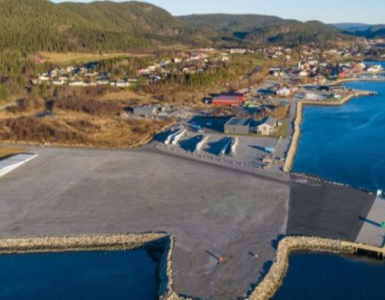Transporting hydrogen: when to pipe, ship, liquify or blend?
The project size and the transporting distance are the main parameters to consider in assessing hydrogen transport costs – IRENA
As countries around the world rush to get a foothold in the expectantly lucrative hydrogen trade, emerging hydrogen traders will need to consider the most cost effective approach for transporting the hydrogen, particularly for distant and overseas markets.
In the second of a planned three studies on the hydrogen business, IRENA investigates the hydrogen transport question, comparing pipelines and shipping and alternative transport vectors such as ammonia, liquid hydrogen and liquid organic hydrogen carriers.
🔥 What about we co-host a webinar? Let's educate, captivate, and convert the hydrogen economy!
Hydrogen Central is the global go-to online magazine for the hydrogen economy, we can help you host impactful webinars that become a global reference on your topic and are an evergreen source of leads. Click here to request more details
Among the findings are that ammonia ships are the most attractive for a wide range of combinations. The shipping cost is relatively small compared to the cost of conversion to and from ammonia and the ammonia storage cost. Thus, longer distances have limited impact on the total cost, making it more attractive as the distance increases.
Pipelines are the cheapest option for short distances of up to 3,000km but while their cost scales linearly with distance, the cost of pipeline transport varies according to the flow transported with a doubling of the diameter roughly doubling the cost but increasing the flow by four times.
Thus, the distance at which pipelines are the most attractive expands as the project size increases and can reach up to 8,000km in cases where repurposed pipelines are possible, such as in North America and Europe.
Liquid hydrogen is another option that can be attractive for large flows and distances of up to around 4,000km. However, its main disadvantage, particularly for longer distances, is the low temperature requirement, which translates into high energy consumption for liquefaction and high costs for cryogenic equipment.
IRENA estimates that by 2030 the transport costs of hydrogen as ammonia could be in the range $2.5-4.5/kg of hydrogen/10,000 km. By 2050 these are expected to drop to $0.7-1.6/kg of hydrogen driven by innovation in the production processes, economies of scale and the trend towards a standardisation of approaches.
Short term approaches
Looking to actions in the short term towards where the benefits may be greatest in the longer term, IRENA recommends ammonia and existing pipelines as the best places to start.
Over 120 ports already have ammonia infrastructure and 10% of global production is already traded. Once renewable ammonia is produced, it could be blended at any ratio with fossil-based ammonia, making initial trade easier.
Ammonia also has an existing market and with the expected growth, would not necessarily need to be reconverted to hydrogen.
Existing pipelines can be repurposed as natural gas demand starts to dwindle. Europe already has experience of repurposing pipeline from natural gas to hydrogen and there are plans to establish a regional network.
Hydrogen blending
Hydrogen blending with natural gas is an option increasingly in the focus of utilities as they start to work with hydrogen. However, IRENA in the report suggests its challenges outweigh its benefits, stating the only benefit is that it allows production to be scaled up without the need to include infrastructure or end use within the scope of the project.
Challenges detailed are the small CO2 benefit, equivalent to about a third of the blending fraction – i.e. a blending target of 20% by volume commonly targetted only leads to about 7% lower CO2 emissions – the increased gas price, given the current higher price of hydrogen and that blending is currently only in pilot and needs further de-risking.
READ the latest news shaping the hydrogen market at Hydrogen Central
Transporting hydrogen: when to pipe, ship, liquify or blend?, May 10, 2022








